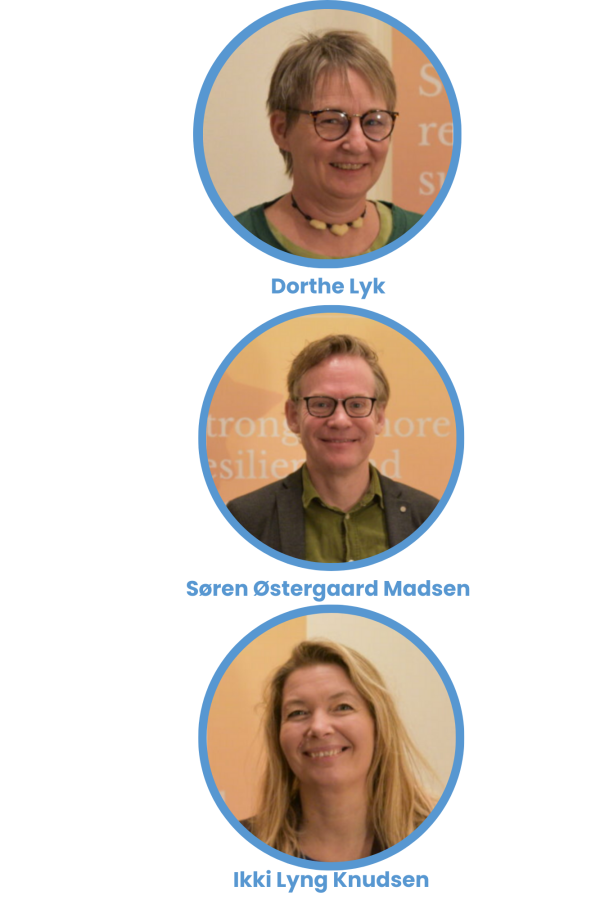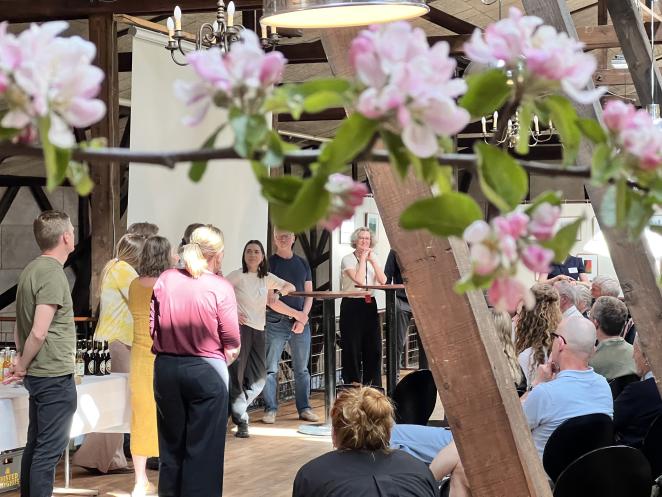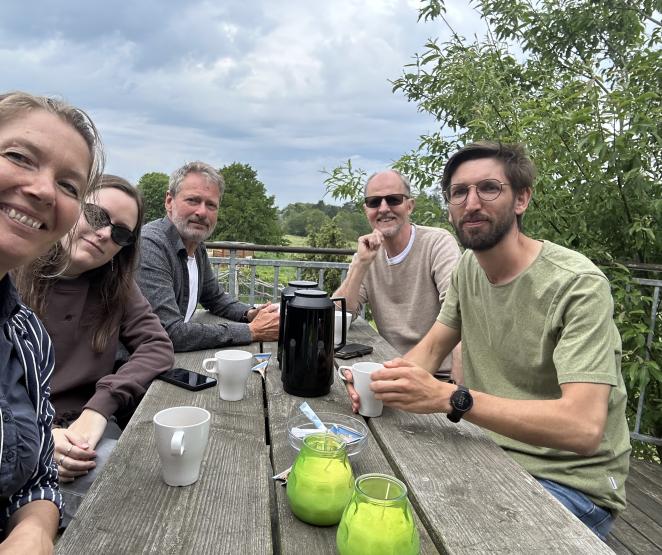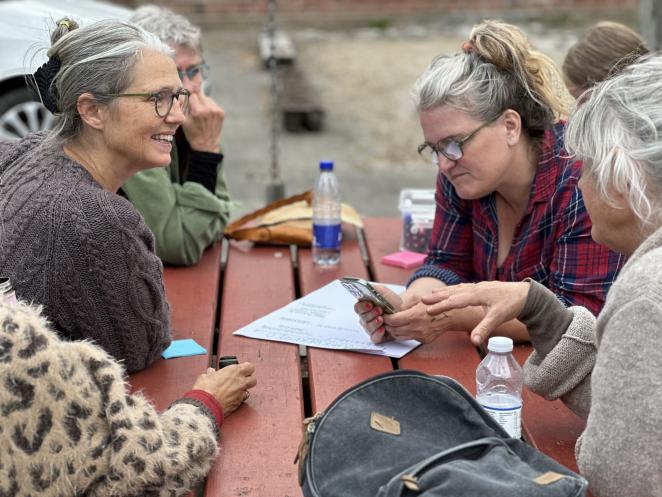
Stenvad Mosebrug
Once a bustling factory with numerous workers processing peat from local bogs, Stenvad Mosebrug has transformed into a living monument of Danish industrial history. This site exemplifies the power of reimagining and embracing new opportunities; its cultural heritage is integral to the community’s identity and pride. We aim to establish a local hub that thrives on the collaboration between the museum, the cultural center, the meeting place, and various local and international initiatives.

Opportunities and Challenges in Norddjurs
Norddjurs Municipality, located in the heart of the scenic Djursland, is an area rich in history, strong local culture, and unique landscapes. Here, you will find small villages surrounded by bogs, forests, and agricultural areas, reflecting centuries of work and interaction between people and nature. Today, however, Norddjurs faces several challenges common to many rural districts in Europe: an aging population, the migration of young people to larger cities, and an increased concentration of job opportunities and services in urban areas. At the same time, there is a growing interest in reinventing rural life, where sustainability, community, and local anchoring become central elements of the future rural district.
With Stenvad Mosebrug as an innovation hub, there is a unique opportunity to bring together civil society, local actors, and external partners to develop sustainable solutions. Through co-creation and joint initiatives, rural life can be revitalised to meet both current demands and future dreams. In Norddjurs, there is potential to create a model for how small communities can find strength in their nature, history, and communities while developing innovative solutions to ensure a good life in the countryside for future generations.

Peat Excavation Machinery: A Story of Innovation
The unique challenge of working in wet bog areas has required remarkable ingenuity. From simple tools to complex machines, the history of peat excavation is marked by creative solutions and innovative designs that could tackle the specific conditions of the bog. This story is a testament to human inventiveness and the ability to adapt and overcome challenges. It demonstrates how limited resources, and a great deal of creativity can lead to functional and imaginative solutions.

New Methods, New Partnerships, and Active Use of Shared History and Culture
In developing the Stenvad Mosebrug Hub, we aim to be a driving force in creating sustainable solutions, with civil society playing a crucial role. Here, citizens, local businesses, research environments, and public institutions are invited to develop joint projects that shape the future of rural districts. In harmony with nature, the landscape, and the site's history, innovation will be based on local resources and the strengths of the community.
Civil society will co-create solutions that address the social, environmental, and economic aspects of sustainability. This can range from energy solutions utilising local resources such as peat bogs and forests, to new forms of agriculture based on regenerative practices and biodiversity. Social communities and networks will also be central to developing robust and inclusive local communities.
Stenvad Mosebrug offers a framework where experimental practices and dialogue foster innovative solutions. Through initiatives like SIRR, Stenvad Mosebrug becomes a platform that connects local efforts with global perspectives. This ensures that new ideas and technologies tailored to the specific challenges and opportunities of rural districts are developed and implemented in close collaboration with the population.

Throughout the project, Stenvad Mosebrug will focus on:
Create a strategic platform to strengthen the site's role as a focal point for local innovation. This work includes enhancing the Cultural House, The Meeting Place and create new partnerships for development, as well as connecting to the regional and national innovation system. To ensure we continuously engage the relevant competencies, both known and undiscovered, we employ a Multihelix model. This model ensures the right partners are involved when new partnerships are formed between civil society, associations, municipalities, knowledge institutions, and local businesses.


Setting: Rural area located in Central Jutland Region and belongs to Norddjurs Municipality.
Main regional business: Agriculture. Tourism.
Challenges in focus: Housing problems. Citizens still identify the hub with its previous role (museum, old factory). Issues with engaging young citizens. Limited resources. Local history as a development driver and strengthening of the local area - local identity. Biodiversity, nature accessibility and sustainable tourism – the green profile – activation of the surrounding nature.
